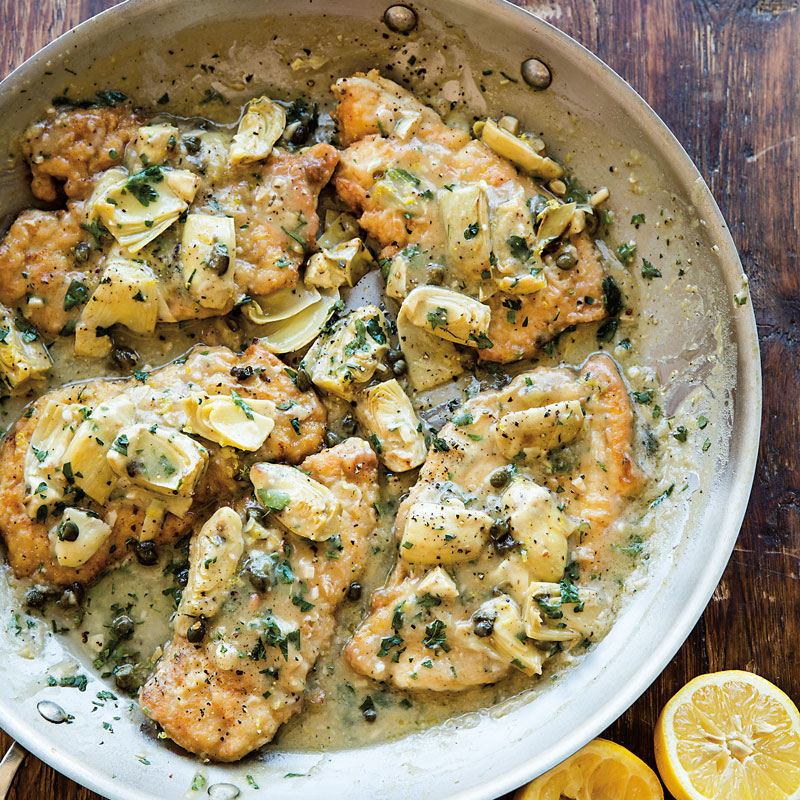
By definition, “piccata” is simple enough: The dictionary says the recipe is just “thin slices of meat (such as veal) that are dredged in flour, sautéed, and served in a lemon and butter sauce.”
Webster’s isn’t prone to hearts and stars emojis, but no doubt you know from experience that this combo is one of the best around. After all, capers, white wine and parsley are all tucked in there, too. Our five-star chicken piccata with artichokes is one of our most popular recipes of all time.
Italian cuisine doyenne Marcella Hazan wrote in her classic Essentials of Classic Italian Cooking that “piccata” is “the term restaurants often use to describe sautéed veal scaloppine.” (She went on to describe her own dreamboat of a calf’s liver recipe.) But “piccata” can often transfer to pork, chicken, cauliflower or fish. It typically involves the flavors (lemon, capers, white wine, butter) you know and love, but you can apply them to all sorts of meats. Here’s the technique:
1. Pound or Slice Thinly
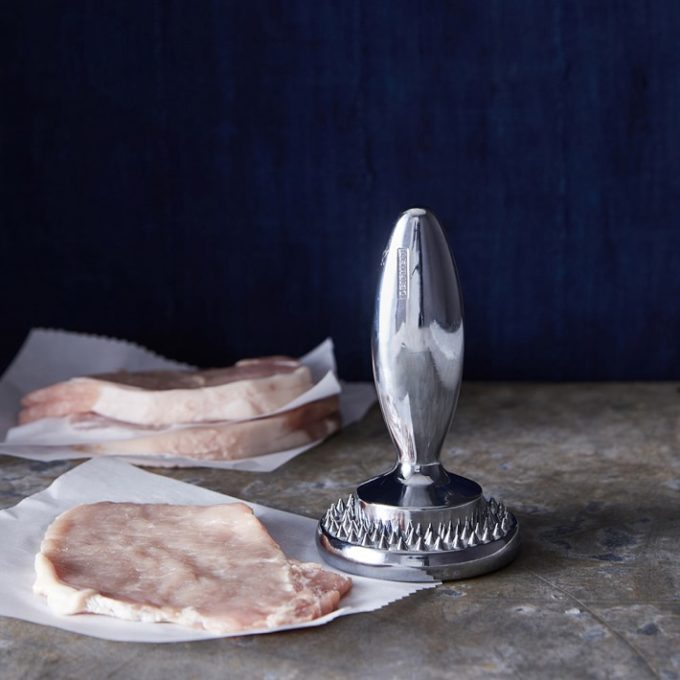
A good piccata recipe merges a crisp exterior with a plush interior, so you’re cooking it thin and fast. You want your (seasoned!) meat or fish skinny, as skinny as seen here, for best results. (Bonus: Get all the stress of your day out while pounding away with the flat side of a meat tenderizer!)
2. Dredge in Flour
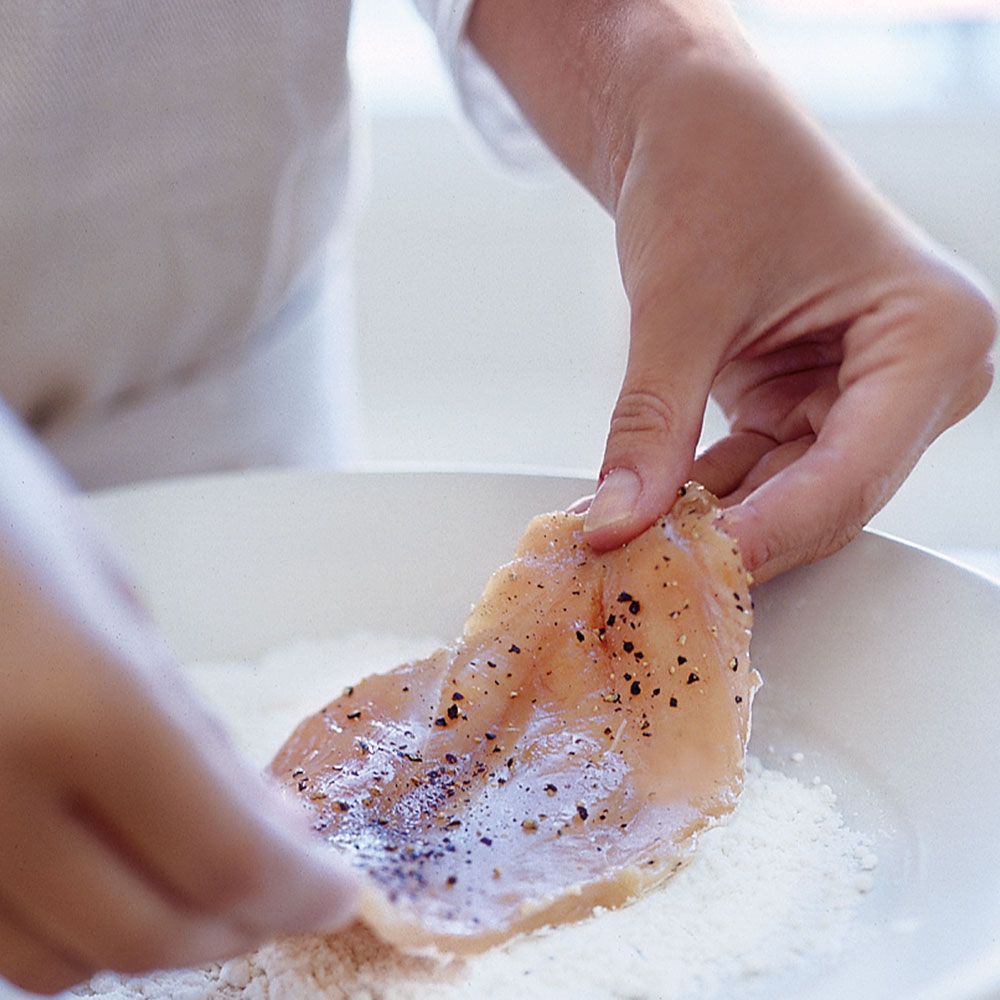
It’s as simple as it sounds. Dredge the meat in flour; shake off excess; set aside.
3. Sauté Over High Heat
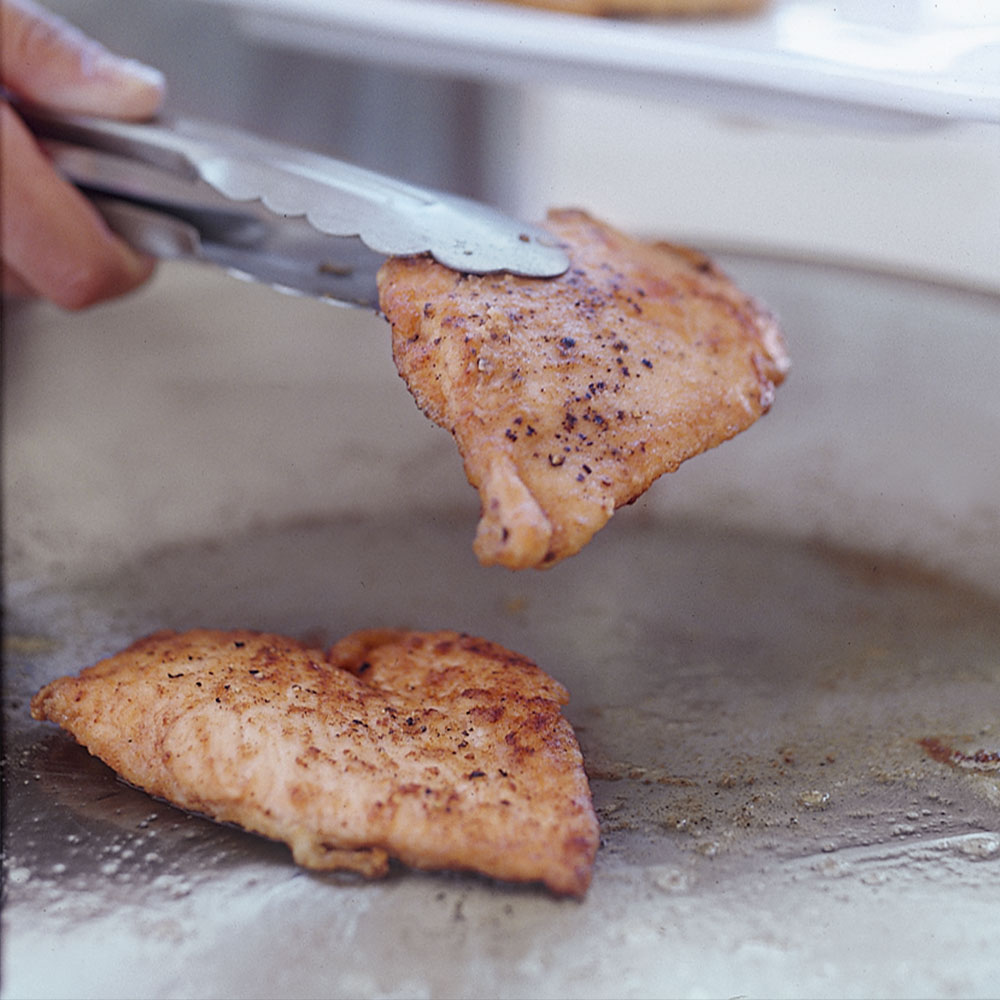
Four minutes per side is all you need to produce knockout chicken piccata. (That’s why this recipe is such a dream on busy weeknights!)
4. Deglaze and Add Flavor

Another time saver for the win: You can set aside your sautéed meat, fish or veggie piccata and go to town deglazing using whatever makes sense. Sure, in this chicken-artichoke piccata that will be white wine and lemon juice, but maybe you’ve done Giada’s lemon sole piccata and need a bit of fish broth. No problem. Just be sure to scrape away any yummy bits of fond from your frying adventure with a flat-headed wooden spoon. That will kick flavor back into the finished dish.
All right, now go forth, and piccata! We’ve got a traditional version, one brimming with artichokes, classic veal and a gorgeous mahimahi recipe with all the right lemon-caper flavors. You can cook pork loin with picatta flavors, or make cauli piccata! One of our favorite ways to incorporate these flavors, to be honest, is to not know how we’re going to flavor something (we’re looking at you, tilapia) and then just start sautéing and rooting around for the capers, because we know we’ll land in the land of piccata. (Hey, it’s a pretty great place to be.)

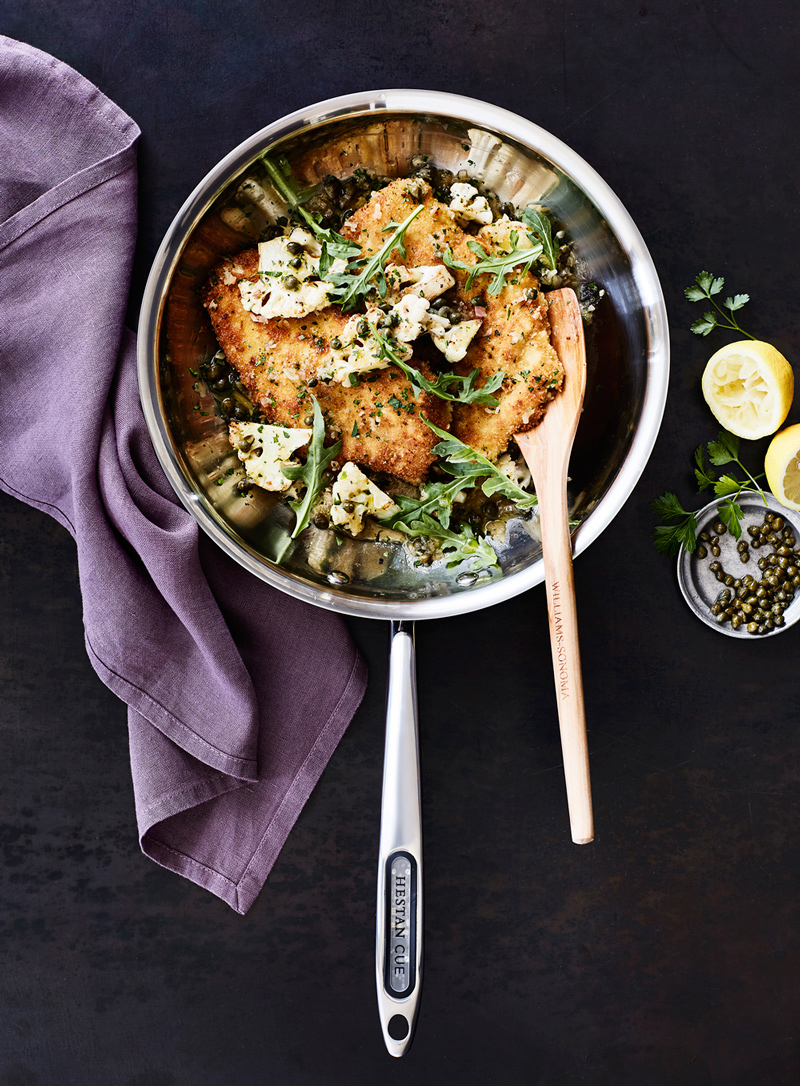
1 comment
Really attractive. Tonight I will try to follow your recipe to have a new dish for my family